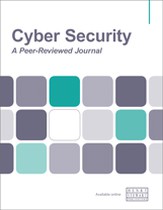Resilience to combined attacks
Abstract
Threats to critical infrastructure are rapidly changing. It is important to anticipate how adversaries can combine various types of attacks for more devastating effects. Executives and those in leadership need a plan to prevent or mitigate these combined attacks. This paper reviews cyber, physical and electromagnetic threats and provides a guide to incrementally protect critical infrastructure. By reviewing this information, readers should be able to understand the emerging threats, ways adversaries can combine attacks and practical steps that can be taken to reduce the likelihood of an attack. The concepts discussed in this paper apply to both existing and new infrastructure. Readers will learn about cyber defence technologies including binary hardening, contextual access control, artificial intelligence (AI), re-imaging and automated orchestration. For physical defence, readers will gain an understanding of the threats posed by snipers and weaponised drones and how to prevent or minimise their impact. To protect against electromagnetic threats, readers will learn about solar storms, directed energy weapons and electromagnetic pulses. They will learn how to use new shielding materials and devices to protect the power, cooling, telecommunication and computing systems. The information in this paper should enable readers to take immediate actions to reduce their own vulnerabilities and empower them to affect policies, design codes and laws. By influencing decision makers, readers should be able to reduce risks and lessen the likelihood and severity of an attack.
The full article is available to subscribers to the journal.
Author's Biography
David Winks current projects include all-threat analyses, planning and design for critical infrastructure that addresses physical, cyber and electromagnetic defence of information technology and industrial control systems. His work with integrated active cyber defence includes threat prevention using binary cyber hardening, contextual access control, biometric identity validation, file regeneration, encryption, information rights management, artifical intelligence, real-time orchestration and cyber integrity restoral technologies. The electromagnetic shielding projects include advanced composite materials and application technologies. David has helped launch and build six companies. David’s work has included projects and travel to 35 countries. He began his career in the design of nuclear power systems and then expanded his expertise to include thin films optics and advanced semi-conductors. David was able to apply this knowledge to RADAR, electronic warfare, satellite and cellular telecommunication systems. His work in telecommunications included the development of CDMA wireless local loop systems, frequency propagation analyses for cities in Eastern Europe and Latin America, and the design and construction of GSM cellular networks in Africa. David utilised his telecommunication system expertise to assist US telecommunication companies in the launch of text messaging, Internet-to-mobile gateways, content management systems, E911 services and commercial location services. To connect cell sites in developing markets, David led in the design of multi-carrier satellite transceivers and fast acquisition modems for voice and data communications and their integration with deployable VSAT terminals. David also led in the commercialisation of demand assigned multiple access (DAMA) control systems for full-mesh satellite connectivity between cell sites. Expanding on his telecommunications work, David assisted clients in deploying MPLS data networks, constructing command centres and building video teleconferencing facilities. He subsequently applied his skills to active cyber defence and electromagnetic shielding for critical infrastructure.
